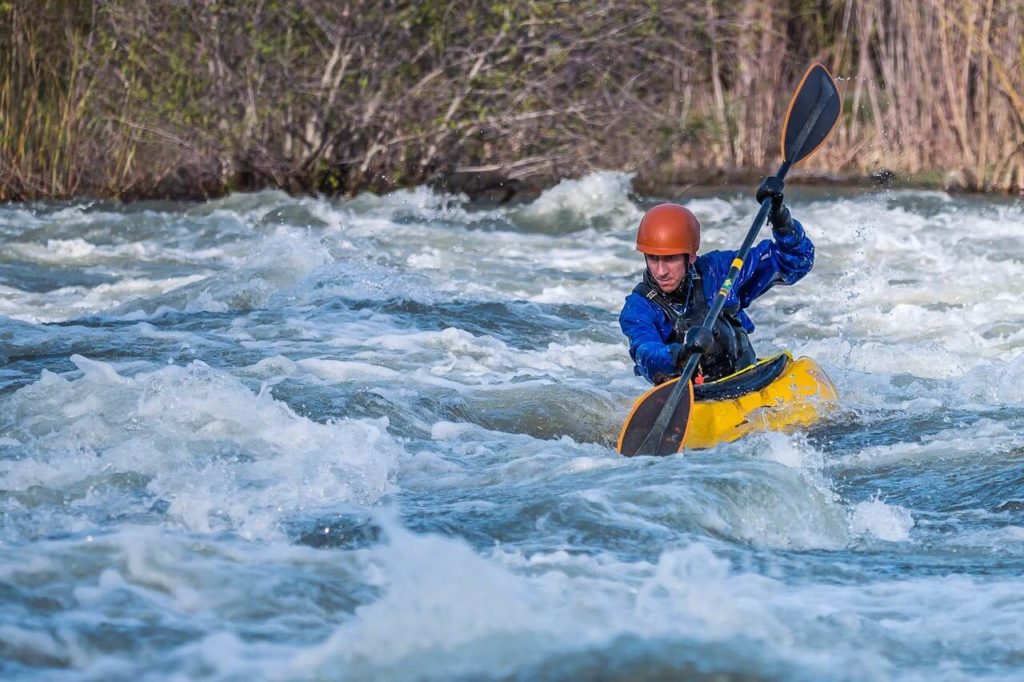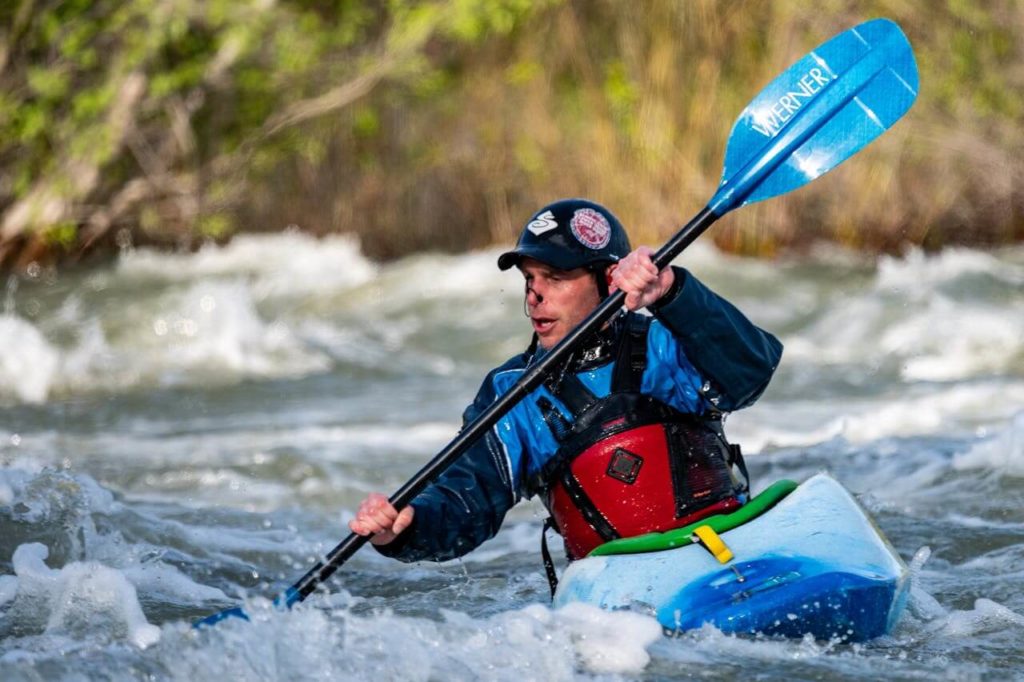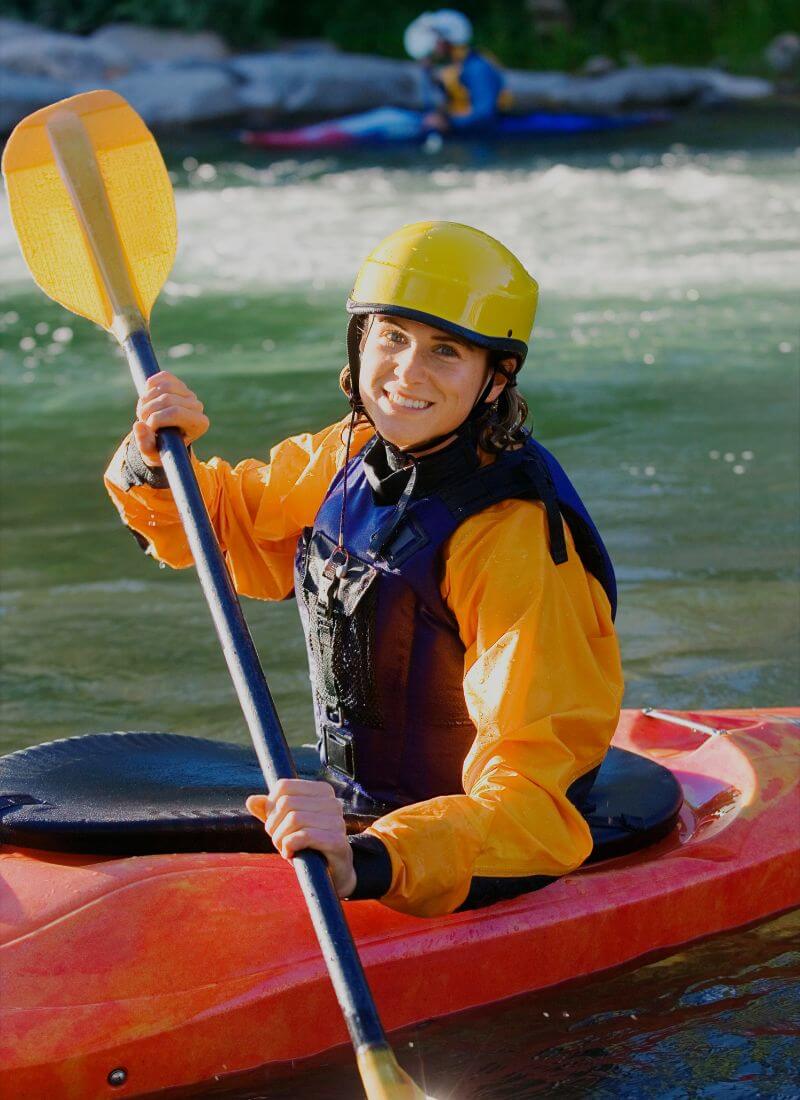Kayaking to Burgess Falls in Tennessee is a super fun and awesome experience for those who love the outdoors! The mesmerizing cascade of water, enveloped by vibrant greenery and peaceful surroundings, is truly a breathtaking view. However, many may wonder if it is possible to kayak to Burgess Falls without the guidance of a professional. In this article, I will discuss whether it’s doable and safe to kayak to Burgess Falls without a guide. I will also guide you about the planning of the journey, including the difficulty level of the waters, the necessary equipment, and precautions to take.
About Burgess Falls
Burgess Falls, situated in Tennessee’s Putnam County near Cookeville, offers stunning scenery, including two beautiful waterfalls: Burgess Falls and Little Burgess Falls. The main attraction, Burgess Falls, standing over 130 feet tall, is one of the state’s tallest and most impressive waterfalls. The falls are formed by the waters of the Falling Water River, creating a picturesque triple cascade, with an impressive 136-foot drop.
The area has a rich history, having been home to native peoples and later settled by European immigrants. Today, Burgess Falls is part of Burgess Falls State Park, attracting over 600,000 visitors annually, who come to enjoy the scenic beauty, explore foot trails, and admire the stunning waterfall scenery, making it one of the most popular destinations in the eastern United States.
Safety Tips For Kayaking At Burgess Falls
Kayaking can be risky, especially at Burgess Falls. It is essential to consider your experience level and the weather/water conditions. The most important thing for water safety is to wear a life jacket, because it’ll keep your head up if something happens. Checking the river flow and current is crucial, as heavy rains can make the rivers too swift and dangerous for kayaking.

Be honest with yourself about your kayaking skills; Burgess Falls is not the place to try kayaking for the first time. Start with calm flatwater locations before attempting moving rivers. If you’re feeling unsure of your skills, it’s a great idea to kayak with a guide.
Also, don’t forget to pack your whistle, first aid kit, and a way to call for help, just in case of any emergency. Drink plenty of water, wear sunscreen and a hat to protect yourself from the sun.
Can You Kayak To Burgess Falls Without A Guide?
Yes, you can kayak to Burgess Falls State Park in Tennessee without a guide, but it’s important to be prepared and aware of the potential challenges before you go.Here are a few things you should know about:
Kayaking To Burgess Falls
Kayaking to Burgess Falls is a 5-7 mile paddle that requires preparation and caution. The put-in is upstream of the falls, and the paddle takes you downstream with the current. There are several dams along the river that require portaging. The river contains mostly Class I and Class II rapids, with some Class III rapids depending on water levels. As you approach the falls, stay alert and be cautious of faster moving water. Dock your kayak and explore the falls viewing area at the base.
Before starting your kayaking journey, it is important to check water levels and weather conditions to ensure a safe and enjoyable trip. Also, don’t forget to bring everything you need, like a life jacket, a helmet, and any other safety stuff.
Hazards & Difficulties
There are hazards such as fast water, strainers, and slippery rocks while kayaking to Burgess Falls. Fast-moving water can make controlling a kayak difficult, increasing the risk of capsizing or collision. Strainers can overturn boats and trap paddlers. The limestone bedrock and rocks around the falls can be slippery, especially when wet, increasing the risk of falls. Proper preparation, vigilance, scouting rapids, and swiftwater rescue training are recommended to safely pass these hazards.

Additionally, when you’re kayaking, you should always wear a life jacket. It is also crucial to be aware of weather conditions and water levels, as they can dramatically impact the difficulty and danger of the trip.
Recommended Skill Level
Kayaking to Burgess Falls is suitable for intermediate to advanced paddlers due to the presence of Class III rapids, which require experience with reading river currents, passing rapids, and performing wet exits and self-rescues. Beginners should avoid paddling this route on their own and should instead paddle Class I and II rapids with a guide to gain whitewater skills. Intermediate kayakers with prior Class III experience and proper preparation can manage the rapids. Advanced kayakers can also handle the rapids, but intermediate skills are sufficient for the route.
Experienced paddlers should always assess the water level and conditions before attempting to kayak to Burgess Falls, as the flow of the river can greatly impact the difficulty of the rapids. Additionally, paddlers should be familiar with the area and have proper safety gear, such as a helmet, PFD, and throw rope, in case of emergencies.
Self-Guided Tips
If you decide to kayak to Burgess Falls without a guide, be sure to take proper precautions. Scouting the route carefully ahead of time is crucial. The water levels can fluctuate, so check recent reports and know what you’re getting into. Always wear a helmet, even if you’re an experienced kayaker. The rocks and unexpected rapids can pose serious dangers. Pack a river map and compass, and know how to read them. Bring a waterproof first aid kit and don’t kayak alone.
Inform an individual of your decided route and an estimated time of return. Getting lost is a real risk for those new to the area. The riverbanks around Burgess Falls have many sheer cliffs, slippery rocks, and dense brush. If you tip over, getting out of the water may be difficult or impossible in some areas. A waterproof phone case allows you to call for emergency help if needed. Check the weather forecast and avoid stormy days when the risks multiply exponentially. While beautiful, Burgess Falls presents serious hazards to those kayaking without a guide. Only attempt it with proper preparation, skills, supplies, and communication.
Permits & Regulations
Kayakers planning a trip to Burgess Falls must secure a TVA permit displayed above the waterline on both sides of the craft. The TVA permit is valid for the calendar year and allows access to all waters managed by the authority. Additionally, the state of Tennessee requires anyone under age 12 to complete a NASBLA-approved boating safety course. Adults can obtain a certificate by taking an approved course, although it is not compulsory. Following boating regulations helps ensure a safe and legal kayaking trip.

In addition to the TVA permit and boating safety course requirements, kayakers should also familiarize themselves with the specific rules and regulations for Burgess Falls. These may include restrictions on certain activities, designated areas for launching and landing, and guidelines for interacting with wildlife and other visitors.
When To Go?
The best time to kayak to Burgess Falls would be late spring (May-June) and early fall (September-October).Higher water levels make kayaking easier and fewer people visit during these times, making for a more enjoyable experience. Avoid mid to late summer (June-August) as water levels drop and crowds peak. Winter kayaking is an option, but should only be attempted by experts due to frigid temperatures and safety concerns.
Moreover, always check the weather and water conditions before kayaking to Burgess Falls. Heavy rain can cause dangerous rapids and fast-flowing water, so it’s best to avoid kayaking during or immediately after a storm. By following these tips, you can ensure a safe and enjoyable kayaking adventure at Burgess Falls.
Conclusion
So, going kayaking to Burgess Falls in Tennessee is a thrilling adventure, but it can be tough. You can do it without a guide, but you need to plan carefully and be very careful. Burgess Falls is beautiful but also has risks like fast water and bad weather. By being safe, respecting nature, and preparing well, you can have an amazing experience at Burgess Falls.
FAQs
Where Can I Start My Kayaking Trip To Burgess Falls?
You can start your kayaking journey to Burgess Falls from locations such as Cane Hollow Recreation Area or Cookeville Boat Dock depending on water levels and accessibility. Ensure that you are familiar with the route and have necessary permits if required.
Can I Beach My Kayak Near Burgess Falls?
Yes, you can beach your kayak near Burgess Falls to explore the surrounding area on foot. Look for suitable landing spots along the shore and make sure to secure your kayak properly to prevent it from drifting away.
Is It Recommended To Hike To The Base Of The Falls After Kayaking?
For those who enjoy hiking, taking a trail to the base of the falls after kayaking can offer a different perspective and a closer view of the natural beauty of Burgess Falls.
Can I Rent A Kayak To Journey To Burgess Falls?
Yes, several rental companies offer kayaks for those looking to start a kayaking adventure to burgess falls. Make sure to inquire about rental terms and requirements.
Also Read:

